Ædificare 2020-2, N° 8
Revue internationale d’histoire de la construction
La huitième livraison de la revue Ædificare est parue chez Classiques Garnier. Elle est disponible par abonnement ou par l’achat du numéro.
Ædificare est une revue semestrielle, internationale, multilingue et pluridisciplinaire couvrant le champ historique de la construction, toutes périodes et aires géographiques confondues. La revue dispose d’un Comité scientifique et d’un Comité de lecture internationaux. Tous les articles font l’objet d’une évaluation par les pairs en double aveugle. Elle paraît en publication papier et numérique aux éditions Classiques Garnier.
SOMMAIRE
André Guillerme
Éditorial. Pour un dictionnaire d’histoire de la construction / Editorial. For a Dictionary of the History of Construction (p. 15 – 29)
Depuis Viollet-le-Duc, aucun dictionnaire n’a été tenté pour l’histoire de la construction alors que de nouveaux rapports s’installent entre le citadin politisé et ses milieux. Les Académies ont conservé les arts et métiers. Les Encyclopédistes exposèrent « l’ordre et l’enchaînement des connaissances humaines ». La fin du XIX e s. a mémorisé les constructions. À l’orée du XX e s., les savoirs dépassent l’entendement. Un dictionnaire collectif mettrait en relief les termes et les sens inédits.
Since Viollet-le-Duc, no one has tried to create a dictionary about the history of construction; meanwhile new relationships have developed between the politicized city dweller and the surrounding environment. The Academies preserved the arts and crafts. The Encyclopédistes elucidated “the order and sequence of human knowledge.” The end of the nineteenth century enshrined construction in memory. At the dawn of the twentieth century, the scope of knowledge was beyond any reckoning. A collaborative dictionary would spotlight new terms and meanings.
DOSSIER / SPECIAL REPORT
COMPTABILITÉS DE LA CONSTRUCTION / CONSTRUCTION ACCOUNTING
Thème coordonné par Michela Barbot et Virginie Mathé / Coordinated by Michela Barbot and
Virginie Mathé
Introduction / Introduction (p. 33 – 42)
Prendre en compte les comptes de la construction : tel est le souhait à l’origine de ce dossier. Il ne s’agit pas de considérer ces documents comme des réservoirs d’informations, mais d’interroger les enjeux et les critères sous-jacents à leur fabrication, à leur conservation et à leur usage. Les cas ici présentés confirment la richesse et la multiplicité des dispositifs matériels qui peuvent être concrètement mobilisés afin de rendre compte au mieux de la singularité de chaque chantier.
This report intends to give consideration to construction accounts. The task is not to see these documents as reservoirs of information, but to question the issues and criteria underlying their production, conservation, and use. The cases presented here confirm the abundance and diversity of the material apparatuses that can be physically used to give the best account of the singularity of each site.
Hervé Mouillebouche – Les comptes de construction de l’hôtel ducal de Dijon / The Construction Accounts of the Hôtel Ducal of Dijon (p. 43 – 80)
Le palais ducal de Dijon bénéficie d’importantes archives documentant sa construction et son entretien, de 1350 à 1477. Les principaux chantiers, comme celui du logis neuf, ont fait l’objet d’une comptabilité séparée. L’entretien général était à la charge du receveur du bailliage, qui devait rendre compte de toutes ses dépenses, dans un registre rendu à la chambre des comptes. Quelques quittances originales conservées permettent de comprendre le processus de rédaction de ces comptes.
The ducal palace of Dijon benefits from important archives documenting its construction and maintenance from 1350 to 1477. The main construction sites, such as the new dwelling, were the object of separate accounting. General maintenance was the responsibility of the receiver of the bailiwick, who had to account for all expenses in a register submitted to the chambers of accounts. A few original receipts that have been preserved help us understand the process of drawing up these accounts.
Mathieu Béghin – Les comptes particuliers des constructions édilitaires arrageoises sous les ducs de Valois-Bourgogne (1402-1442) / The Accounting of the Edilitary Constructions of Arras under the Dukes of Valois-Burgundy (1402–1442) (p. 81- 104)
En tant que ville capitale du comté d’Artois, Arras fut à plusieurs reprises le théâtre de l’expression de la puissance et de la splendeur de la cour princière des Valois-Bourgogne. Les travaux entrepris en 1402 pour le mariage d’Antoine de Rethel ou en 1430 pour la reconstruction de la maison de justice comtale en témoignent. De ces chantiers subsiste une précieuse documentation dont l’étude éclaire les rouages de la production comptable bourguignonne et la gestion des chantiers édilitaires.
As the seat of the county of Artois, Arras was on several occasions the setting where the power and splendor of the princely court of the Valois-Burgundys was expressed. The work undertaken in 1402 for the marriage of Antoine de Rethel or in 1430 to reconstruct the count’s courthouse testify to this. Invaluable documentation remains for these worksites; studying them sheds light on the workings of Burgundian accounting and the management of administrative worksites.
Matthieu Scherman – La construction d’une pièce maîtresse. Le contatoio des Salviati de Londres, vu à travers leur comptabilité (1445-1465) / Building a Centerpiece. The Contatoio of the Salviati of London, Merchant
Bankers, as Seen Through their Accounts (1445–1465) (p. 105 – 121)
Famille importante de Florence, les Salviati ont mis en place une entreprise manufacturière, commerciale et financière à l’échelle européenne. La compagnie développa son activité vers le Nord-Ouest de l’Europe en ouvrant des agences à Londres puis Bruges au cours des années 1440. Dans la comptabilité de la compagnie londonienne, de nombreuses entrées concernent la maison. Une des améliorations importantes consiste en la construction d’une pièce dédiée à la comptabilité, le contatoio.
An important Florentine family, the Salviati set up a manufacturing, commercial and financial conglomerate extending across Europe. The company expanded into northwestern Europe, opening branches in London and then Bruges in the 1440s. In the accounts of the London company there are many entries concerning the house. One of the most important improvements is the construction of a
room dedicated to accounting, the contatoio.
Francesca Rognoni – Il Forte e la Cattedrale. Contabilità e politiche edilizie a confronto, in due cantieri di primo Cinquecento – Ascoli Piceno, 1529-1549 / “Il Forte e la Cattedrale”. Accounting and Building Practices in the Architectures of the Early Sixteenth Century – Ascoli Piceno, 1529–1549 (p. 123 – 143)
L’analyse critique des manuscrits où sont consignées les dépenses relatives à la construction du fort de la porte Maggiore (1540-1543) et de la façade de la cathédrale d’Ascoli Piceno (1529-ca 1540), offre l’opportunité de raisonner sur la comptabilité des chantiers italiens de la première moitié du XVIe siècle et sur les relations dialectiques existant entre les registres de comptes et leurs contextes historique, politique et économique spécifiques.
A critical analysis of the manuscripts in which the expenses related to the construction of the fort of the Porta Maggiore (1540–1543) and the façade of Ascoli Piceno’s cathedral (1529–circa 1540) are recorded, offers the opportunity to consider the accounting of the Italian building sites of the first half of the sixteenth century and the dialectical relations between account books and their specific historical, political, and economic contexts.
Mohammed Hadjiat – La comptabilité du génie militaire en Algérie de 1830 à 1848 / The Accounting of Military Engineers in Algeria from 1830 to 1848 (p. 145 – 171)
Durant la Monarchie de Juillet, un ensemble de textes, images et relevés est constitué par le génie militaire. Pour cette contribution, une attention particulière sera portée aux devis et aux mémoires de travaux rédigés par les chefs du génie militaire, ainsi qu’aux apostilles du directeur des fortifications en Algérie portant des recommandations. Cet ensemble donne des descriptions concrètes des travaux à mettre en œuvre et des affectations du budget militaire consacré à cette mission.
During the July Monarchy, a collection of texts, images, and surveys was created by military engineers. For this contribution, particular attention will be paid to the estimates and memoranda of work written by the chief military engineers, as well as to the apostilles of the director of fortifications in Algeria providing recommendations. This collection provides concrete descriptions of the work to be carried out and the allocation of the military budget devoted to this mission.
Guillaume Dreyfuss – Informing Restoration Planning at St Paul’s Anglican pro-Cathedral in Malta. From Foundation to Intervention through Historical Building Accounts / Informer le processus de restauration de la cathédrale anglicane St Paul de Malte. Des fondations à l’intervention à travers l’examen des comptes de chantier (p. 173 – 204)
This article presents the results of a study of the Accounts & Vouchers for the Expense of Building the English Collegiate Church of St. Paul in Valletta from March 1839 to March 1846. Analysis highlights the use of accounting methods to refine our understanding of the phases of construction. The article also highlights the place of archival research in the context of an ongoing restoration project, particularly in the identification of construction pathologies.
Cet article présente les résultats de l’étude du volume Accounts & Vouchers for the Expense of building the English Collegiate Church of St Paul in Valletta from March 1839 to March 1846. L’analyse met en avant l’utilisation des méthodes comptables pour affiner la compréhension des phases de construction. L’article souligne aussi la place de la recherche en archive dans le contexte d’un projet de restauration en cours, notamment dans le cadre de l’identification des pathologies de la construction.
COMPTES ANTIQUES DANS LE TEXTE / ANCIENT ACCOUNTING IN TEXT
Virginie Mathé
Avertissement / Warning (p. 207)
Sylvie Rougier-Blanc – Des inventaires de bois de construction à Pylos à l’époque mycénienne ? Remarques autour des tablettes PY Vn 46 et 879 / Inventories of Timber in Pylos in the Mycenaean Period. Remarks on the PY Vn 46 and 879 Tablets (p. 209 – 223)
Parmi les tablettes en linéaire B découvertes dans le palais mycénien de Pylos, PY Vn, 46 et 879 se distinguent par le vocabulaire et la référence à des pièces de bois travaillées. Cet article reprend le dossier et montre qu’il ne s’agit pas d’inventaires de matériaux de construction pour un futur chantier, mais de deux listes de pièces de bois de formes, de natures et de destinations différentes pour procéder si besoin à l’entretien et au remplacement d’éléments dans les édifices pyliens.
Among the Linear B tablets discovered in the Mycenaean palace of Pylos, PY Vn, 46 and 879 stand out for their vocabulary and reference to worked wood pieces. This article revisits this issue and shows that they are not inventories of building materials for a future construction site, but two lists of pieces of wood of different shapes, natures, and destinations to be consulted, if necessary, in order to maintain and replace parts of the buildings in Pylos.
Pierre Villard – Les comptes de construction de Dūr-Šarru-kīn / The Construction Accounts of Dūr-Šarru-kīn (p. 225 – 238)
Dūr-Šarru-kīn est la ville nouvelle la mieux documentée de la Mésopotamie ancienne, à la fois par des sources archéologiques et écrites. Sont étudiées ici 8 tablettes cunéiformes, qui constituent des « comptes de construction ». Elles révèlent que les chantiers avaient été divisés en secteurs, chacun sous la responsabilité d’un gouverneur de province chargé de fournir personnel et matériaux. Elles permettent aussi de préciser le sens de plusieurs termes architecturaux akkadiens.
Dūr-Šarru-kīn is the best documented new city in ancient Mesopotamia, based on both archaeological and written sources. Eight cuneiform tablets detailing “construction accounts” are studied here. They reveal that building sites were divided into sectors, each under the responsibility of a provincial governor tasked with supplying personnel and materials. They also allow us to clarify the meaning of several Akkadian architectural terms.
Virginie Mathé – Un compte de construction à Délos (Grèce) en 207 av. J.-C. / A Building Account in Delos (Greece) in 207 BC (p. 239 – 255)
En partant d’un compte délien de 207 av. J.-C. gravé sur une stèle, cet article donne un aperçu des comptabilités de la construction en Grèce ancienne. Il présente les aspects matériels et le contenu de ce document. Il expose ensuite l’organisation administrative et financière du chantier. Il s’interroge enfin sur les enjeux de l’inscription sur la pierre de tels textes : le compte, ou plutôt la synthèse qui en est faite sur la pierre, relève surtout ici d’un discours de justification.
Using as its point of departure a Delian account from 207 BC engraved on a stele, this article gives an overview of construction accounting in ancient Greece. It presents the material aspects and the content of this document. It then explains the administrative and financial organization of the construction site. Finally, it scrutinizes the stakes surrounding the inscription of such texts on stone: the account, or rather the overview of it inscribed on the stone, is above all a discourse of justification.
Pauline Ducret – L’inscription de la via Caecilia (Italie, fin IIe – début I er siècle av. J.-C.) / The Via Caecilia Inscription (Italy, Late 2nd – Early 1st Century BC) (p. 257 – 268)
L’inscription fragmentaire de la via Caecilia enregistre les travaux de réfection d’une route au nord de Rome à la fin du II e ou au début du I er siècle av. J.-C. Elle dresse la liste des sommes dépensées pour des chantiers ponctuels (revêtement d’une portion, ponts et arches) et le nom des entrepreneurs. Le magistrat en charge de l’opération, questeur et curateur des voies, a pu vouloir rappeler l’intégrité dont il a alors fait preuve. Ce document est un unicum à l’échelle de l’histoire romaine.
The fragmentary inscription from the Via Caecilia records the repair work on a road north of Rome at the end of the second or beginning of the first century BCE. It lists the sums spent for specific work (paving of a section, bridges, and arches) and the names of the contractors. The magistrate in charge of the operation, quaestor and curator of the roads, may have wanted to remind us of the integrity he showed at the time. This document is a unicum with regard to Roman history.
COMMENTAIRES / COMMENTS
Robert Carvais – Mesurer, estimer, corriger. Commentaires de comptes en expertise au XVIII e siècle / Measuring, Estimating, and Correcting. Commentary on 18th-Century Expert Accounts (p. 271 – 291)
Au cours d’une recherche sur l’expertise du bâtiment parisien au cours du XVIII e siècle, nous avons constaté dans les procès-verbaux des experts l’usage fréquent d’écritures relevant d’opérations comptables, qu’il s’agisse des estimations de travaux faits ou à faire dans le corps même de l’expertise ou bien des mémoires de travaux en pièces annexes desdits procès-verbaux. Nous éditons trois exemples correspondants à trois étapes du calcul des experts : le toisé, la prisée et la réduction.
In the course of researching Parisian building appraising during the eighteenth century, we have noted in the appraisers’ minutes the frequency of entries pertaining to accounting operations, whether they be estimates of work done or to be done noted in the body of the appraiser’s assessment itself, or memoranda of work as appendices to said reports. In this article we present three examples corresponding to three stages of the appraisers’ calculations: toisé (measurement), prisée (estimation), and discount.
COMPTES RENDUS / REVIEWS
Isabelle Chave, Étienne Faisant, Dany Sandron (éd.), Le chantier cathédral en Europe. Diffusion et
sauvegarde des savoirs, savoir-faire et matériaux du Moyen Âge à nos jours (Anaïs Lamesa) (p. 295 –
302)
Loïc Couton, Renzo Piano Building Workshop, Entre la science et l’art (Philippe Arnaud) (p. 302 – 305)
COMPENDIA
Introduction (Michela Barbot et Virginie Mathé) (p. 309 – 310)
The Construction Accounts of the Hôtel Ducal of Dijon (Hervé Mouillebouche) (p. 310 – 311)
The Accounting of the Edilitary Constructions of Arras under the Dukes of Valois-Burgundy
(1402–1442) (Mathieu Béghin) (p. 312 – 313)
Building a Centerpiece. The Contatoio of the Salviati of London, Merchant Bankers, as Seen Through
their Accounts (1445–1465) (Matthieu Scherman) (p. 313 – 314)
“Il Forte e la Cattedrale”. Accounting and Building Practices in the Architectures of the Early Sixteenth
Century – Ascoli Piceno, 1529–1549 (Francesca Rognoni) (p. 315 – 316)
The Accounting of Military Engineers in Algeria from 1830 to 1848 (Mohammed Hadjiat) (p. 316 –
317)
Informing Restoration Planning at St Paul’s Anglican Pro-Cathedral in Malta. From Foundation to
Intervention through Historical Building Accounts (Guillaume Dreyfuss) (p. 318 – 319)
Inventories of Timber in Pylos in the Mycenaean Period. Remarks on the PY Vn 46 and 879 Tablets
(Sylvie Rougier-Blanc) (p. 319 – 320)
The Construction Accounts of Dūr-Šarru-kīn (Pierre Villard) (p. 320 – 321)
A Building Account in Delos (Greece) in 207 BC (Virginie Mathé) (p. 321 – 322)
The Via Caecilia Inscription (Italy, Late 2nd – Early 1st Century BC) (Pauline Ducret) (p. 323)
Measuring, Estimating, and Correcting. Commentary on 18th-Century Expert Accounts (Robert
Carvais) (p. 323 – 325)
Présentation des auteurs et résumés / Abstracts (p. 327 – 338)
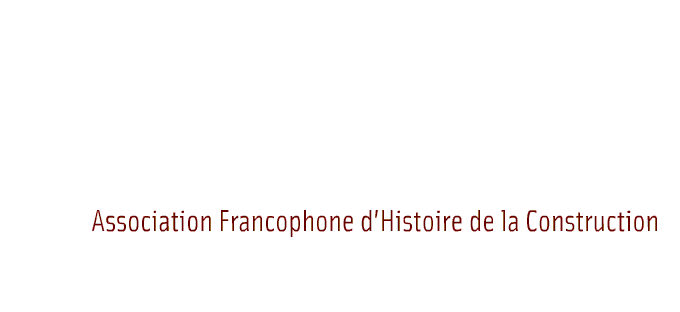
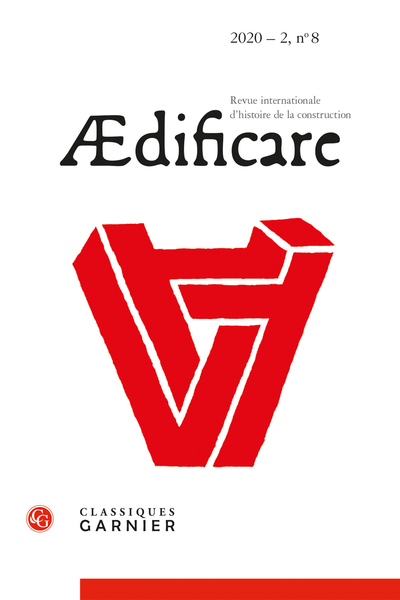
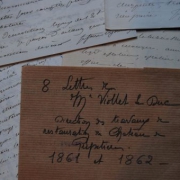
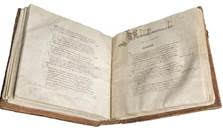
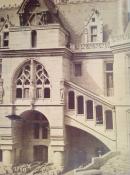
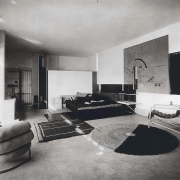


 Laurence Charlier Zeineddine
Laurence Charlier Zeineddine